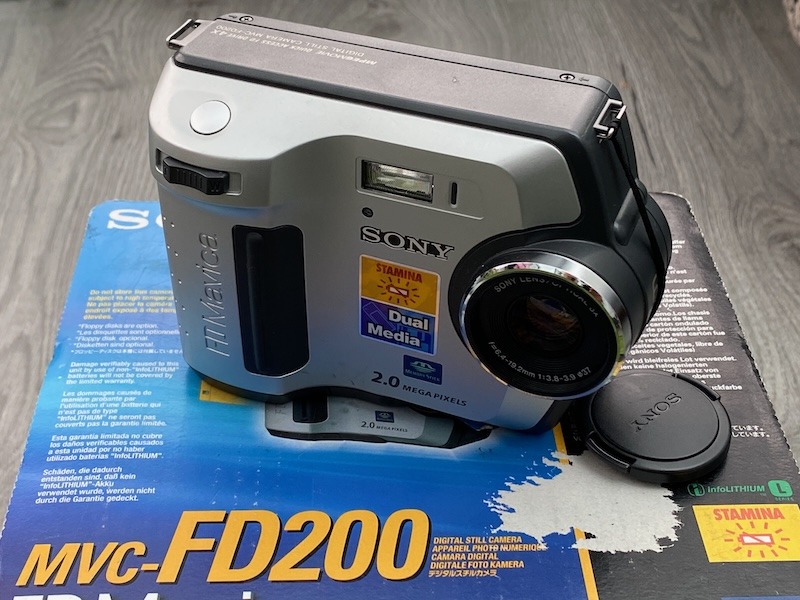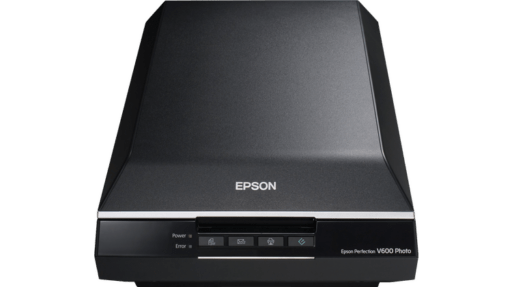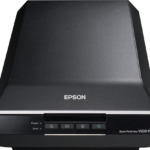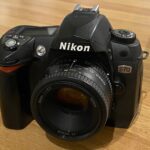Sony are synonymous with innovation and have overseen the development of some monumentally successful product releases that have changed the markets in which they have entered. Walkman, Betamax and Playstation will instantly spring to mind for anyone who grew up in the 80’s and 90’s and, with the exception of Betamax which wasn’t a bad product, Sony have experienced legendary levels of success in the music, TV and gaming markets.
The rise of Playstation is particularly noteworthy. Until its release in late 1994, Sony had never troubled the long established duopoly of Sega and Nintendo who had enjoyed market domination for many years before both faltered to differing degrees at an utterly pivotal moment in gaming history. For a company that had never designed a console before, the meteoric rise of Playstation was nothing short of a business masterclass and by the time Playstation 2 came along the landscape had changed forever and the rest was history.
This is not to say that everything Sony ever touched turned to gold. Indeed, their obsession with proprietary formats has come back to haunt them on many occasions and hopefully so will their disgraceful anti-repair antics with pairing components in their PS4 and 5 consoles. Why is any of this relevant to photography? Well, in the world of 35mm photography Sony were completely absent – they never made a single film camera. In the digital world, however, Sony were pioneers and saw the potential for digital photography from the very early 1980’s.
As a consequence of Sony’s foresight, they silently ruled the roost through the first wave of early digital SLR’s and compact cameras. Sony made sensors that were of the highest quality available at the time and all of the big camera brands including Canon and Nikon fitted Sony sensors in their cameras for years in the early 2000’s. Despite this, Sony never dominated the digital camera market with their own brand cameras despite launching countless models, and it wasn’t until the launch of their Alpha range of DLSR’s that they began to gain meaningful traction. Up to that point, Sony carried on innovating and came up with some interesting and some utterly mad designs along the way as they tried to shoe-horn various different bits of tech together into camera bodies.
Most famous of these has got to be the Mavica FD Floppy Disk range of digital cameras, the last of which was the MVC-FD200.
In this post:
- A piece of RAF history
- The floppy obsession – Part 1
- The floppy obsession – Part 2
- Handling and Ergonomics
- In use
- Conclusions and learning
A piece of RAF history
I know this will seem like a common theme recently, but I had no intention of buying an FD Mavica, there’s been so much written and recorded about them that I didn’t feel the motivation to add to an already comprehensive coverage. Having said that, the obsession and focus in most places seems to be with the very early models, first launched in 1997. The MVC-FD200 was the final floppy disk based Mavica that Sony ever made, released in 2002.
Some time back a colleague and I had discovered one of these cameras in a cupboard at an old workplace, so I got hold of that same someone who still worked there and asked if it was still knocking about and whether I could borrow it. The camera did indeed still exist with one small problem – during a particularly over zealous office tidy up, the box, charger, battery and all the accessories had been thrown away. I took the camera on the off chance that batteries and chargers were cheap enough to make it worthwhile.
Inevitably, this wasn’t to be the case. Replacement batteries didn’t come cheap and the total cost to get a battery and charger would’ve worked out more expensive than just buying the whole camera. For £25 I managed to buy a boxed replacement with all the accessories, battery and charger. What turned up in the post exceeded all my expectations.
 | 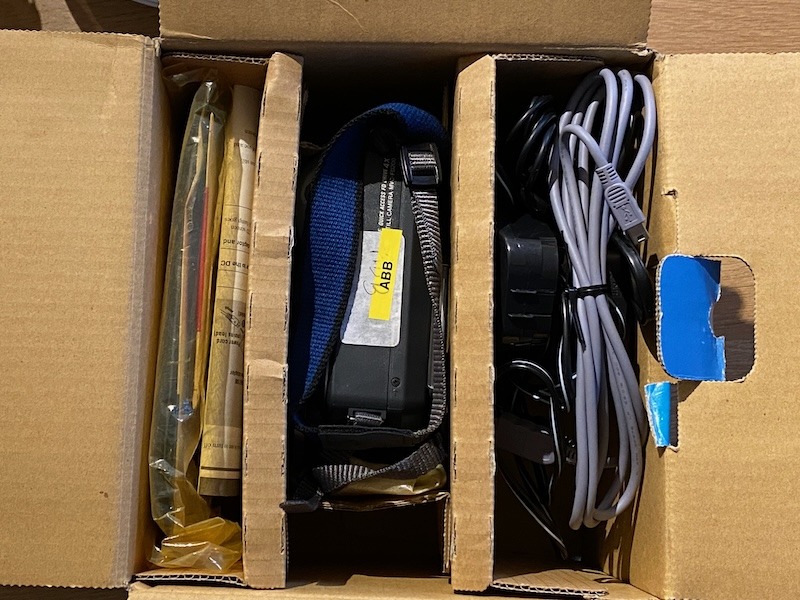 |
From the outside, the box is in “ok” condition, nothing really to write home about, but on the inside it was evident that this camera had been extremely well looked after. Every single item from new was still there, including protective covers, bags and documentation. It was a complete kit. Who looks after things this well? Turns out its the Royal Airforce…
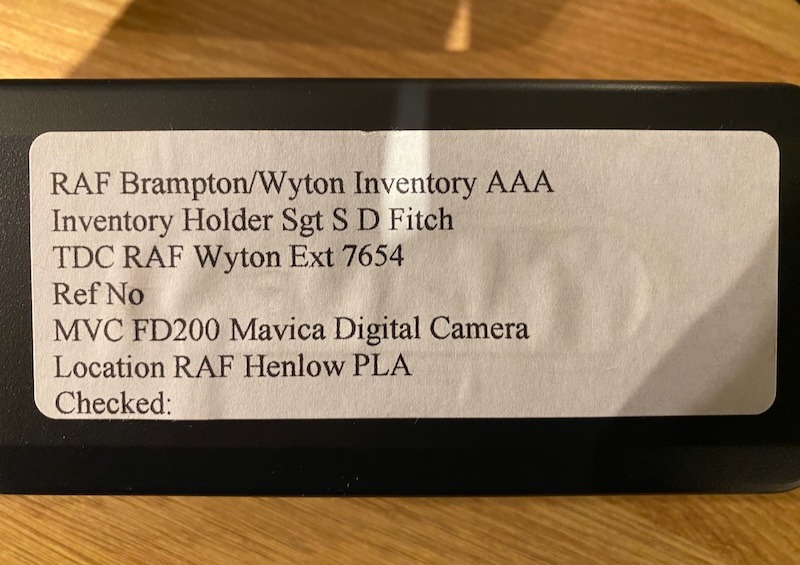
RAF Brampton in Cambridgeshire had been quite a big deal according to Wikipedia, but was gradually scaled down until its closure in 2013. It would seem that a lot of things from Brampton then made their way to RAF Henlow which houses a museum amongst other things. Unfortunately, Henlow is now also earmarked for closure and looks due to be disbanded some time in 2026. It seems wherever this Mavica goes, closure usually follows so I’m half expecting to find my house being taken away by the Government some time soon.
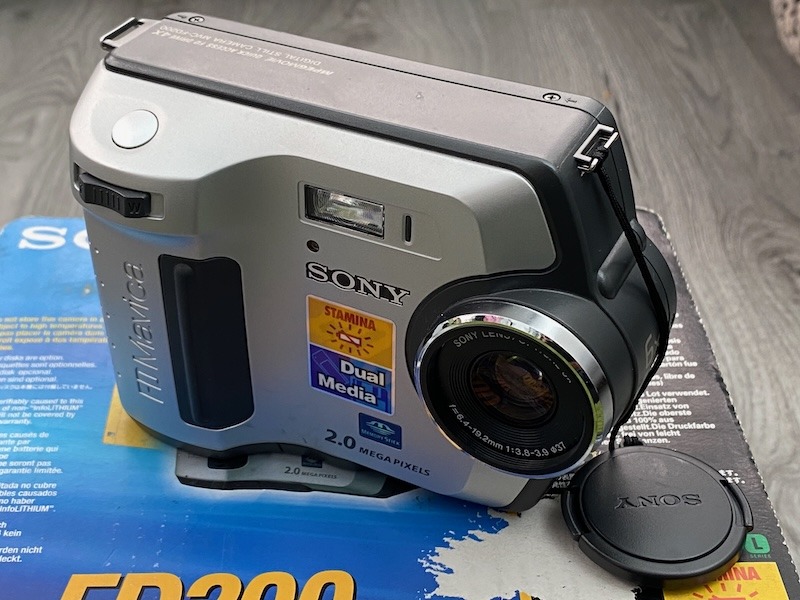
The RAF really did look after their equipment. Short of removing a couple of inventory stickers, there was nothing to clean up or restore on this camera. The condition is nothing short of remarkable for a 22 year old piece of equipment. I’d love to know what the camera was used for by the RAF. The likely answer is it was probably something extremely boring and office based such as documenting inventory, but it’d be nice to imagine it’d been in the air at some point – although what you’d gain from a 2MP image out of an aeroplane is debatable.
The floppy obsession – Part 1
Sony threw the kitchen sink at the digital camera market in the first decade of the new millennium. The list of models launched from 2000 – 2004 is utterly astounding. They had compacts coming out of their ears and it must’ve been truly bewildering trying to decide which Sony camera to buy and then by the time you’d decided and placed an order they’d released about six new models making yours obsolete.
You could take your pick from the W, T, U, S, P and F (not FD!) series of cameras, each offering their own apparently unique form factor and designated use case. Just don’t ask me what they were because I haven’t the faintest idea, and of course, you could buy an FD series.
If you wanted a digital camera, no matter what your personal, obscure or specific user requirements were, Sony were selling a camera to match your needs. Launching in 1997 and lasting until 2002 Sony launched no fewer than 18 FD Mavica models, although differences between some were sparse to say the least. Make no mistake, however, the FD Mavicas were really very successful.
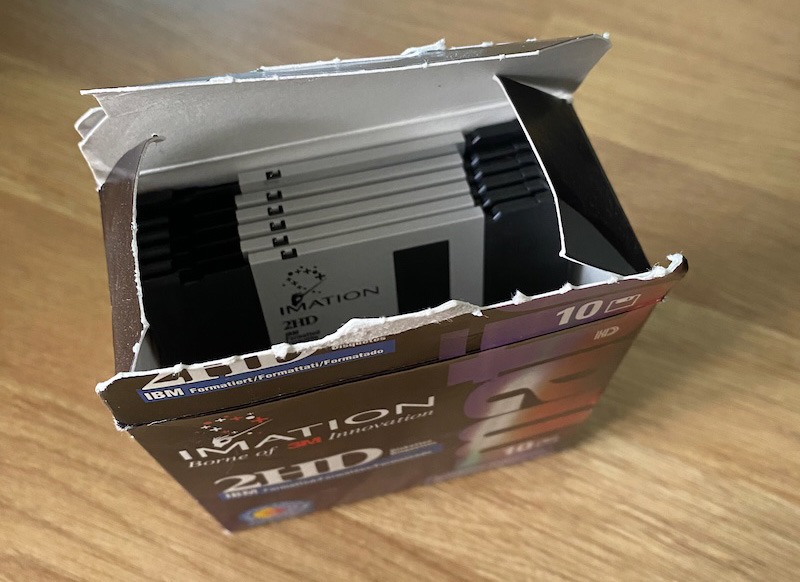
Floppies made a world of sense in 1997. Every single computer at the time had a floppy disk drive as standard, disks were stupidly cheap, readily available and everyone knew how to use one. This was long before the floppy disk became nothing more than “the save icon” in Word. The 3.5″ floppy disk showed extraordinary longevity, refusing to die long after 1.44mb had become a prohibitively restrictive amount of storage. Their convenience, especially for things like including small driver files with new hardware and the lack of any compelling, comparatively cheap alternative available meant there was no desire for a wholesale shift away from them. Arguably, Steve Jobs played a large part in finally seeing off the floppy disk by refusing to include one in the 1998 iMac G3, a decision which was widely criticised at the time. By the time 2003 came round and Apple moved on to the beautiful G4 iMac, no one was questioning the wisdom of moving on from legacy media.
I’ve written previously about the sheer pace of change that went on in the world of technology at that time and the FD Mavica’s are a perfect case in point. In the space of five years what seemed like a perfect solution to a the genuine problem of conveniently and easily transferring images from camera to computer had become utterly pointless and obsolete by the end of its lifecycle. Considering that the first model the FD5 could fit up to 40 images on a single disk, by the time the FD200 rolled out in 2002 that number had reduced to 4 and the reason for its discontinuation is stunningly obvious – file sizes were simply too big. Camera technology had moved on, floppy disks had not.
The floppy obsession – Part 2
Sony briefly and aptly launched a promotional / informational campaign for the first FD Mavica models on floppy disk. I first came across this fact in an old computing magazine which had one of these disks stuck inside and thought it’d be worth a look. Lets face it, it was just another excuse to crack out the retro PC.
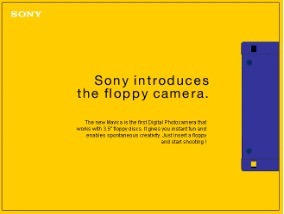 | 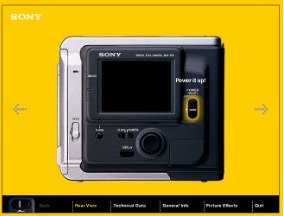 | 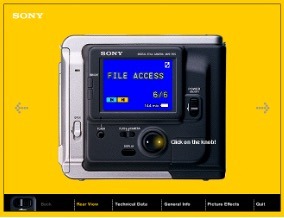 |
The start is really well done, you have to slot the floppy in the drive, then it shows you the front and back of the camera before prompting you to “turn it on” so you can browse through some pictures that have been stored on the camera. This is really reminiscent of the Canon Virtual Camera CD I looked at just a few weeks back and is almost as good.
I have to wonder what they were thinking with some of these pictures, though. It looks like they hired a Harry Hill lookalike and let him loose with it.
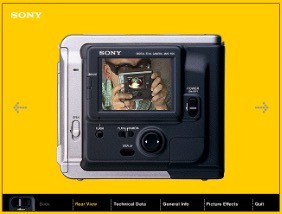
The rest of the Mavica promotional floppy is exactly what you’d expect – a slide show of specifications, the launch date and a run down of some of the more prominent features. It’s a nice touch, especially for 1997 when many people would still not have had an internet connection at home – this would’ve been quite a cheap and effective way of getting something flashier than a standard one page advert into the hands of potential customers.
Sony squeezed every last drop out of floppy disks as they reached the end of the line with these cameras. The FD200 was a step too far and Sony pretty much knew it. At 2MP resolution, the files were now starting to approach at least 700kb each and no amount of flashy promotion was going to gloss over the fact you’d be lucky to fit two whole images on a disk. Having tested the camera with both memory stick and floppy drive recording, I found that it consistently compressed images recorded to floppy to no more than 350kb. If you record to memory stick, then the compression is far less aggressive with file sizes averaging just under 900kb. That’s quite the difference and one hell of a compromise just to drag out the floppy drive capability for one more generation of camera.
By 2002, USB memory sticks had just started to appear, solid state memory cards were fairly well adopted and images stored on a floppy drive were no longer the convenience they once had been. Indeed, the choice to use their proprietary Memory Stick form factor instead of the widely adopted CF, Smart Media or SD card standards that were present in other cameras of the time seems like a short sighted decision in the end. History tells us that Memory Stick offered nothing more than a minor inconvenience in finding a card reader that would accept them.
Sony, however, were not about to give up on their incredibly successful formula for Franken-Camera design and were already gearing up to manufacture digital cameras with a cd burner bolted to the back. Believe it or not, I had my hands on a sealed one of those too, but cannot for the life of me remember what happened to it…
Handling and Ergonomics
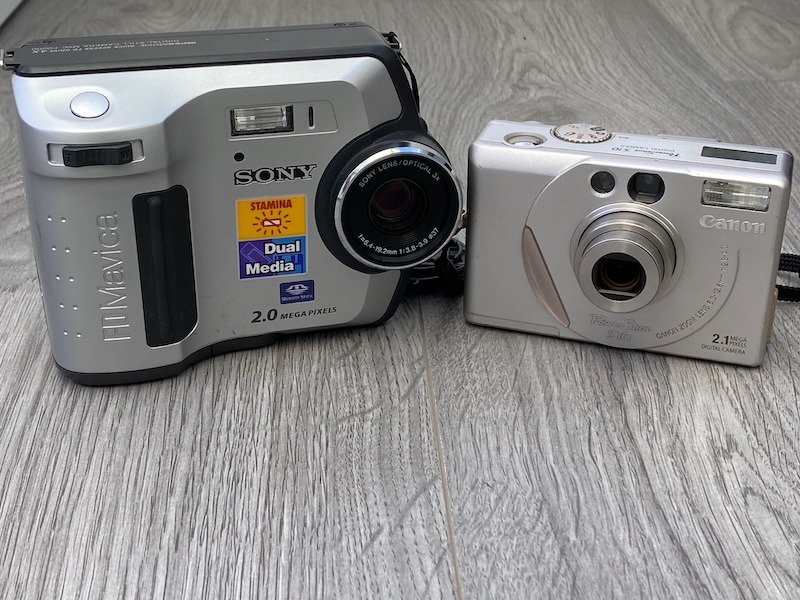
FD Mavica’s were never small, however earlier models were definitely more compact than their later counterparts. Ergonomic is not a word that you can use when describing what it’s like to use the FD-200. I have a coat with extraordinarily large pockets and I can just about squeeze it in but normal coats and trouser pockets need not apply. Holding the camera isn’t uncomfortable but it is akin to just holding half a brick in your hand that happens to take pictures.
Control placement is ok, but the usability is utterly dire – worse than some of the cheap and nasty digital cameras from the same era. The back of the camera is home to a four way rocker switch with a centre click feature to boot. It’s horrible – not quite solid enough to inspire confidence or accurate selection, and too wobbly to make the centre click accurate every time. The number of times I tried to select an option but ended up simply moving out of the menu are beyond counting. There are switches for almost everything and why one of them is for the backlight is beyond me – you physically cannot see the screen if you turn this off, no matter what light you’re in. I also found it quite easy to accidentally flick the floppy/memory stick selector only to find that when I pressed the shutter nothing happened because there was nothing to record an image to.
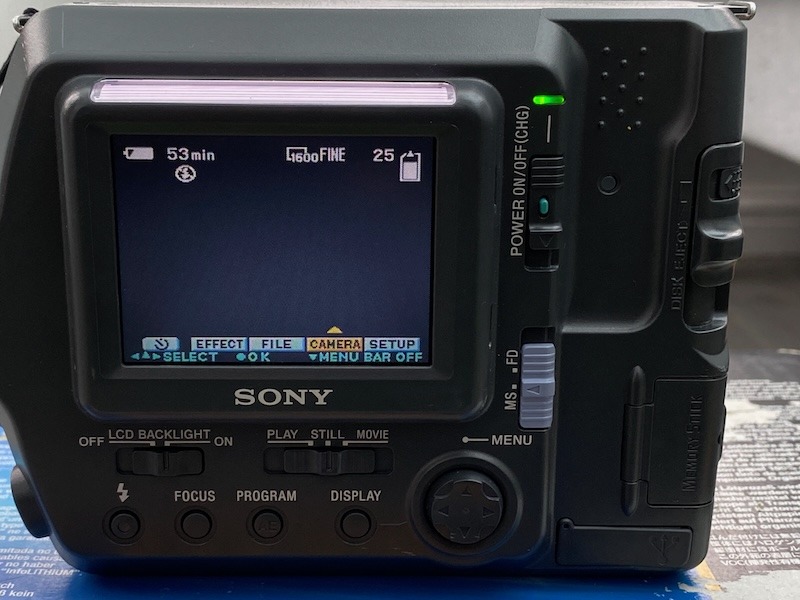
There is one clear and obvious benefit of this extra large body and that is the space it afforded to fit a really quite decent lens in. Good optical zooms were hard to come by in most compact digital cameras of the time, but when you’ve got lots of space to play with then you can fill some of that with some quality zoom optics. I have no complaints at all about the lens in this camera, it really is quite impressive in context and the zoom range is certainly useful when you’re trying to fill the frame from a distance to maximise the 2MP resolution.
In use
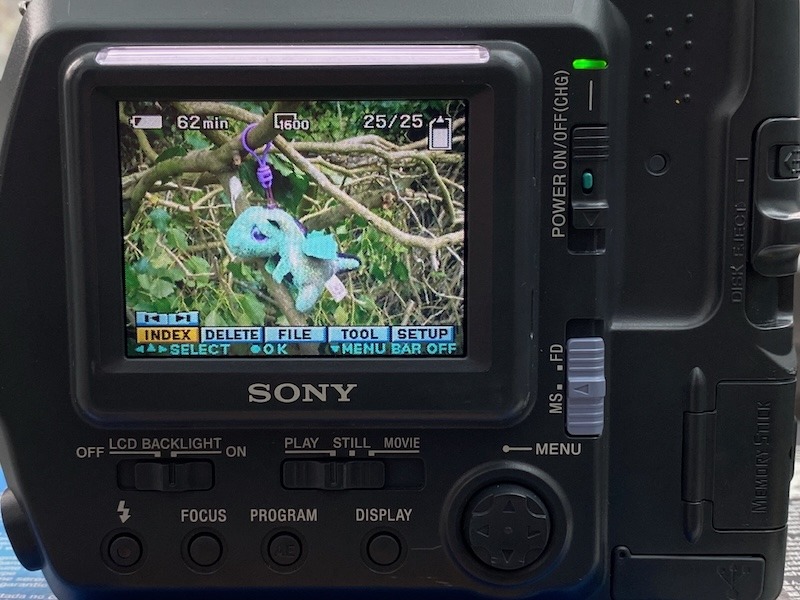
Sony had so much faith in their InfoLithium battery technology that they didn’t include a viewfinder in any of the FD Mavica cameras. This is a bold move for something that is going to power a floppy drive as well as a full time LCD screen. I have to say that they got it right, my copy with its more than 20 year old battery still lasts a long time. In fact, I don’t know how long the battery lasts because I never managed to use it for long enough that it ran out. That’s saying something.
Once set up the camera is reasonably easy to use but I really don’t understand their design choices. The only well thought out button is the dedicated focus switch that allows you to quickly engage macro mode, but otherwise useful features like ISO are hidden in menus that require the hideous four way selector button to use. Talking of ISO, I used the camera in auto ISO mode for 99% of the time and not once did it switch out of ISO 100 which was odd considering the range of lighting situations I used it in.

Focus is generally slow and patience is the name of the game as the Mavica sets about satisfying itself that the picture is in focus and provides a nice little green dot on the display as confirmation. I took a couple of frames whilst the focus confirmation was still flashing and they also came out sharp.
Once the picture has been taken there’s a reasonable delay as it writes the image to floppy if you’re using one, memory stick is much faster as you’d expect. Using floppy disks is quite amusing. There’s something really quite tactile about swapping them in and out – and swap them in and out you will because of the 4 image limit on each disk. The looks you get when you whip a box of floppies out of your pocket to feed a digital camera the size of a small cat is quite something. I bumped into one person who was out doing his actual day job with a very nice camera and he laughed almost uncontrollably when I showed him my kit for the day.

Using disks is almost like having a reverse Polaroid, you’re shovelling massive bits of plastic into the camera for each shot rather than the camera spitting something out at you. One downside of relying on floppies is that if there is an error with the disk you won’t know it until it refuses to write the file, at which point it will throw an error up on the screen and you lose the shot for good measure. In these days of floppy disks no longer being produced, it is more than likely that even a new box of disks will contain one or two that no longer work for one reason or another. Something to be aware of if you’re taking pictures that might mean something to you on one of these. Why would you do that? I’ve no idea.
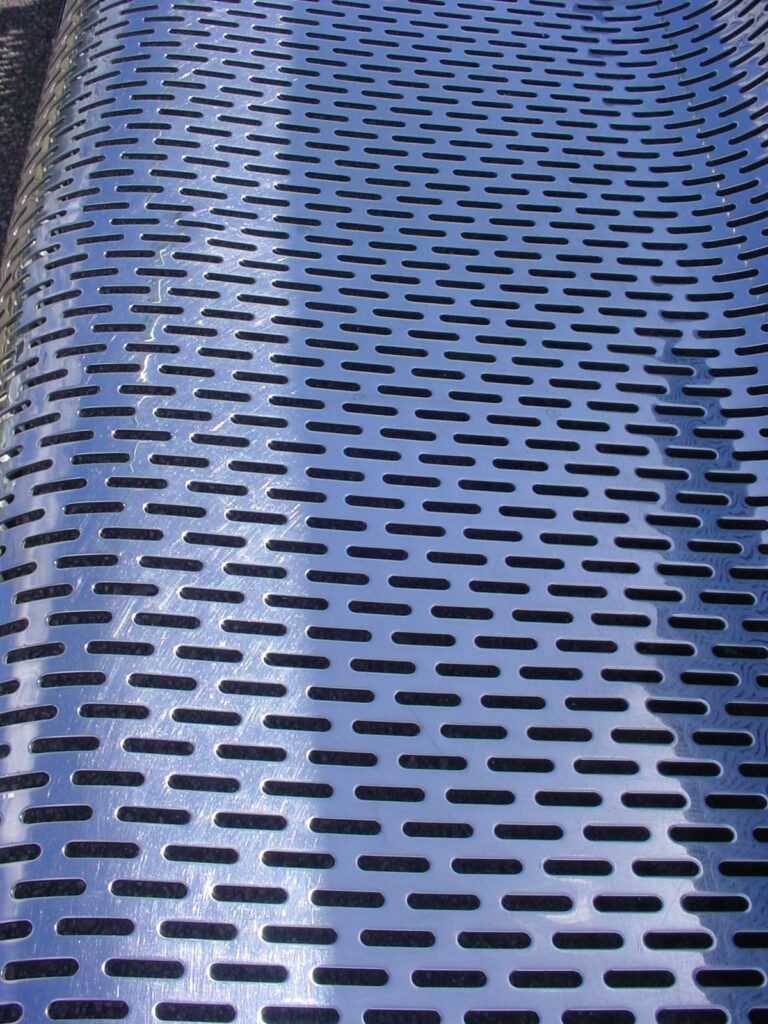
Flicking the mode switch to “movie” allows you to use a video mode which is typical for a 2002 digital camera, in other words, fairly underwhelming. Videos are constrained to five second long clips without sound. That’s your lot, five seconds. The default resolution is a rather small 160×120 but you can bump this up to a whopping 320×240 if you’re prepared to trade space on your floppy for double the resolution. Either way, both of these resolutions are not enough to look even remotely ok on a smart watch display let alone a PC screen. Here’s a sample clip in the default low resolution:
This quality of video was not a Sony only problem in 2002. Most compact cameras of the time had a video mode similarly restricted to low resolutions but as far as I can see, they would allow between 10 and 30 seconds of continuous video recording and some did capture sound even though silent video was not uncommon. These videos on the FD200 compress down to 122kb each and therein lies the probable reason for the 5 second restriction. At the lowest resolution you could record and store around 11 of these video clips on a single disk – quite remarkable for a humble floppy. There’s an irony there that it’s possible to fit nearly three times as many videos as still images on a floppy disk (and yes, I know you could just reduce the resolution of the still images).

In reasonable light, the image quality produced is very pleasing, the lens gives plenty sharp images without any kind of hideous softness towards the corners of the frame. Chromatic aberration and purple fringing are much better than on many compact digital cameras I’ve used in the past. Colours are nice and vibrant and the JPG files straight out of the camera would’ve looked nice enough for users who wanted to print them out.
Conclusions and learning
The FD Mavica series wasn’t designed as a typical compact, portable, tourist on holiday type camera and shouldn’t be judged as such. These cameras had one killer feature – ease of getting the images off the camera and either onto your computer quickly or shared with others. The fact that you didn’t need any special equipment, the misery of configuring serial ports or any proprietary software at all was a real bonus. Here was a tool that anyone could pick up, take a picture and have it on their desktop within seconds without any kind of training – if you could use a PC and copy a file already, then you could use a Mavica.
This convenience should not be underestimated. In corporate environments this was a massive win. IT departments didn’t need to provision, install, support and update special software for the new office toy, training didn’t need to be provided to workers as they already knew how to use floppy disks and there was little to go wrong when users didn’t need to go rummaging around the back of their computers to plug a cable in – or kick it out accidentally and then phone for help…

As such, Mavica’s sold like hotcakes to corporate and education users. Schools apparently loved them and they were readily used to quickly get images in to documents, magazines and websites. In the days of the early 1997-1999 models, there probably was no more convenient and simple way to get images from a camera, into a computer and published than using a Mavica. God knows, using something like the Casio QV-10 was a lesson in cable and software management on its own, this would’ve seemed like a dream come true.

Despite these clear and obvious advantages of the Mavica system, like all things in that era, the design was of its time. Things rapidly advanced and soon it became obvious that floppy disks were neither sensible nor suitable for storing digital images that were growing ever larger in size as sensors grew beyond the 1-2 megapixel range. Memory card technology quickly caught up and few could argue that solid state storage wasn’t a much better idea when compared to the relatively fragile and fickle nature of floppy disks. The writing was well and truly on the wall by the year 2000 and by 2002 it feels like the FD-200 was one last squeeze of the orange to see if there was any juice left.
The Mavica FD-200 is a fine piece of history and a fitting farewell to a wildly successful line of cameras. Today it’s reasonably pointless. If you’re nostalgic for old Sony digital cameras then you can get the exact same experience from any of a number of their past compact cameras that will all be more convenient than this. If you crave the floppy experience, and it is a definite novelty, then this isn’t the camera to try. That 4 image limitation just makes it rather pointless and the earlier models with their much smaller resolutions and therefore file sizes are much better ideas in this case – which is why they still command a nostalgia premium on the second hand market.

One good thing to finish on, Sony used the same battery in a range of cameras at the time and for long after the discontinuation of the FD Mavica range. This means that, rather unusually, you can still buy new decent quality batteries to keep these cameras working well in to the future. This is not something that can be said for many 22 year old pieces of technology! However, the same cannot be said for the availability of 3.5″ floppy disks. Perhaps they’ll see a resurgence like vinyl and film to the point where someone starts producing new ones again.
Then again, probably not…
Share this post:

